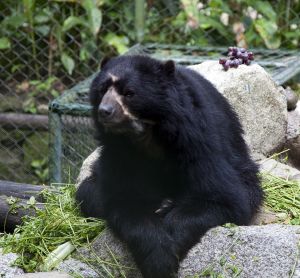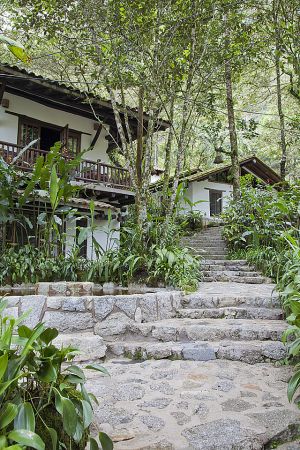Heavy overnight rain and early morning showers in Aguas Calientas, Peru, put paid to the idea of climbing to the top of the mountain called Machu Picchu, which towers above the citadel. The Inkaterra Machu Picchu Pueblo hotel offers early morning bird watching walks around the grounds of the hotel, which proves to be the only chance to sight the Peruvian national bird, known as the Andean Cock-of-the-Rock, and a plethora of hummingbirds.
The hotel also runs the Inkaterra Association, which amongst other things supports a sanctuary for the critically endangered spectacled bear on the hotel property (which is an extensive 5 hectares and runs alongside the river). For a small donation ($10), I visit the three bears that currently live in the sanctuary. Yogi is 11 years old and whilst he passed a rehabilitation programme to return him to the wild several years ago, he later returned to the semi-captivity area after a few weeks. He will spend the rest of his life (expected to be 22-25 years) in the sanctuary. Coco is 3 years old, and was rescued from appalling conditions where he was being kept as a pet in a cage. He will start his rehabilitation programme in the next few months, and there are high hopes that he will be successfully released to the wild. The oldest bear is Pepe, who is 19 years old, and an ex-inhabitant of the University of Cusco, who tried to care for him. Since being taken in the sanctuary, he has learnt to climb a ramp to obtain his food – a key skill for bears in the wild that Pepe never learnt in all of his years in captivity. Like Yogi, Pepe will spend the reset of his life in the sanctuary.
The spectacled bear is the fourth largest bear in the world, behind the polar, grizzly, and brown bear, and is surprisingly large given they were the model for Paddington Bear, from darkest Peru. The Inkaterra Association is doing great work and deserves as much support as possible with the Spectacled Bear project.





